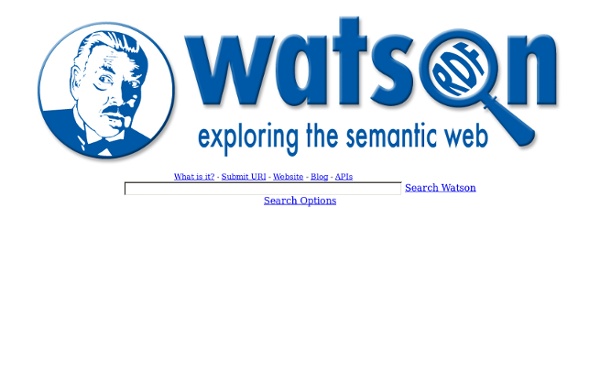



Cascaad - Connect your interests Social Surfing @ UIUC While current search engines serve known-item search such as homepage finding very well, they generally cannot support exploratory search or information foraging effectively. In exploratory search, users do not know their information needs precisely and also often lack the needed knowledge to formulate effective queries, thus querying alone, as supported by the current search engines, is insufficient, and browsing into related information would be very useful. Currently, browsing is mostly done through following hyperlinks embedded on Web pages navigating through structures consisting of a fixed set of categories or other meta-data available, which tends to be restrictive. In this project, we propose to leverage search logs to allow a user to go beyond hyperlink browsing and support flexible browsing through a multi-resolution topic map (see Fig. 2) constructed based on search logs.
Social Surfing @ UIUC While current search engines serve known-item search such as homepage finding very well, they generally cannot support exploratory search or information foraging effectively. In exploratory search, users do not know their information needs precisely and also often lack the needed knowledge to formulate effective queries, thus querying alone, as supported by the current search engines, is insufficient, and browsing into related information would be very useful. Currently, browsing is mostly done through following hyperlinks embedded on Web pages navigating through structures consisting of a fixed set of categories or other meta-data available, which tends to be restrictive. In this project, we propose to leverage search logs to allow a user to go beyond hyperlink browsing and support flexible browsing through a multi-resolution topic map (see Fig. 2) constructed based on search logs.
DeepaMehta -- Homepage crtl-news KnowMiner | KnowMiner focuses on knowledge discovery in large textual data sets. FlexViz | The CHISEL Group, University of Victoria FlexViz is a graph based visualization tool written in Adobe Flex. It allows users to browse a single ontology where the concepts are represented by nodes and the relationships between concepts (e.g. “is_a”, “part-of”) are represented as arcs. It has support for node and arc type filtering, built-in searching, many different graph layouts, zooming, and much more. Primary developer: Chris Callendar Partners: National Center for Biomedical Ontology (NCBO) FlexViz is a graph based visualization tool written in Adobe Flex. node and arc type filteringsearchingmany different graph layoutscustomizable node and arc labelscustomizable node and arc tooltipszoomingforcing nodes to stay on the screen (can cause nodes to overlap)history navigation support similar to in a browser (back/forward)can be displayed as a widget on other (with a fixed ontology) Here is a widget version of FlexViz showing the Cell Type ontology: For more information please contact us. Like this: Like Loading...
FlexViz | Download FlexViz software for free RDF-Gravity Sunil Goyal, Rupert Westenthaler {sgoyal, rwestenthaler}@salzburgresearch.at Salzburg Research, Austria RDF Gravity is a tool for visualising RDF/OWL Graphs/ ontologies. Its main features are: Graph VisualizationGlobal and Local Filters (enabling specific views on a graph) Full text SearchGenerating views from RDQL QueriesVisualising multiple RDF files RDF Gravity is implemented by using the JUNG Graph API and Jena semantic web toolkit. Figure 1: Screenshot of RDF-Gravity, showing a part of Wine Ontology 1 Graph Visualisation RDF Gravity defines a visualization package on top of the JUNG Graph API. Configurable renderers for edges and nodes of a graph, including different node shapes and edge decorations etc.A Renderer Factory allowing the configuration of the above node and edge renderers based on the type of an edge or node. For graph layout, it uses the layout algorithms directly supported by the Jung API. 2 Global & Local Filters 3 Full Text Search 4 Visualising Multiple RDF Files
Social Media Analytics | Social CRM Tools | Collective Intellect Oracle Social Cloud is a cloud service that helps you manage and scale your relationship with customers on social media channels. Oracle has integrated the best-in-class social relationship management (SRM) components - social listening, social engagement, social publishing, social content & apps, and social analytics - into one unified cloud service to give you the most complete SRM solution on the market. Why Oracle? Only Oracle can connect every interaction your customer has with your brand.
Cogito semantic technology Cogito for intelligence The Cogito semantic technology The material analyzed through the intelligence process is mostly unstructured: communications, conversations, data, news, etc., and rarely has an organized form, such as a database structure. As a consequence, the activities of analysis and processing can be highly resource consuming, and prone to error. The work of analysts and knowledge workers remains essential, and technology cannot fully replace it (and never will). The limits of standard approaches Common-or-garden search engines and systems to process unstructured information are unable to address the problem of separating relevant and irrelevant data - as users of Internet search engines know very well. Most enterprise search systems are essentially keyword-based , using statistical methods in an attempt to arrive at a “best guess” understanding. Improved results can be obtained with unconventional technologies. Why use semantic technology? For example: what kind of car are you looking for?
Crowdmap Crowdmap allows you to set up your own deployment of the Ushahidi Platform without having to install it on your own web server. Crowdmap is the fastest, simplest installation of the Ushahidi platform. Within minutes you'll be up and running with your own installation, mapping reports events and visualizing information. Things You Can Do With Crowdmap Monitor Elections Use the power of the crowd to monitor and visualize what went right, and what went wrong, in an election. Map Crisis Information Whether it's a natural disaster, epidemic or political crisis, Crowdmap is built to handle information coming out of a crisis. Curate Local Resources Crowdsourcing isn't just for emergencies, you can use it for local knowledge and business too. Document A Zombie Invasion How else will you survive the coming apocalypse? Learn more on the Crowdmap Website .